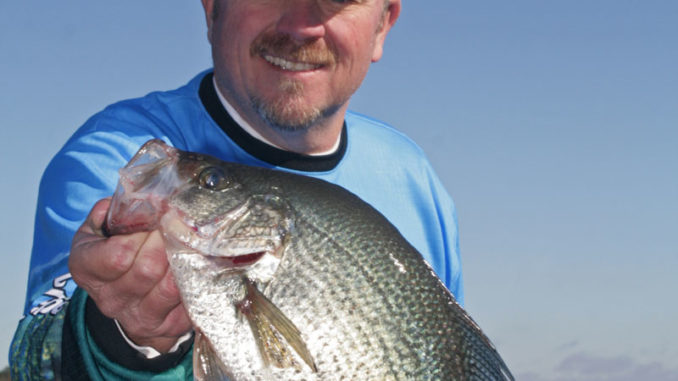
Summer fishing patterns can be extremely good
Summer setting up on Lake Marion and Lake Moultrie is not necessarily a negative for Santee Cooper anglers. We’ll have to adapt to fishing different patterns, some of which will involve deeper water than we fished during the spring.
Hot weather and warming water keep fish locked into specific patterns, ensuring consistency in places feeding fish are found. With a little effort and exploring, anglers will find fishing success not only consistent, but often exceptional, through summer.
Not all the action will be in deep water, although that’s going to be a key for some species. Put crappie near the top of that list.
For many experienced anglers and most crappie guides, summer patterns means consistency in terms of making good catches, including limits, of quality fish. The general pattern will be using your graph to locate schools of crappie relating to deepwater cover. Brush piles, sunken logs and recently upgraded artificial reefs are prime examples.
Kevin Davis, who owns and guides out of Blacks Camp on the Diversion Canal, said both lakes will produce quality crappie action through the fall for fishermen who search the deeper water.
“Based on fishing here for many years, I know the fish will be relating to deep water and some form of cover in that deep water,” Davis said. “But they change specific areas frequently, so the fish-finding process is where I need to stay patient and focused. I’ll start based on where I found crappie most recently but will move to brush or woody cover that’s shallower or deeper based on what I see on my graph and what type of day we have.”
Davis (843-312-3080) said deep water rules, but it may change daily. On cloudy days, or days when the wind creates a chop on the surface, the fish will often be found shallower — not shallow as in spring, but more of a move from being buried in a maze of brush to suspending above the top of the same cover.
“I love it when I see crappie marked on my graph suspended just above and around the edges of the cover and structure,” he said. “That typically means the fish are more active and willing to bite. It also means presentation of the bait, usually a minnow or small jig, is easier because I don’t have to probe into the cover. We can pull off just the right amount of line to fish a specific depth. I’ve found it’s always better to be able to catch fish and avoid snags.”
Davis said sometimes, getting a bait into the limbs and brush is required. When action slows, he’s quick to pull in his baits and move to a similar target.
“Frequently, we’ll find crappie are on a similar depth and cover pattern in other nearby areas, so I’ll move to a new area quickly if action slows or I don’t get bites,” he said.
Largemouth bass are certainly another prime target during June, and although the spawning and ultra-shallow water time is over for the most part, big fish will still be in relatively shallow water — shallow enough to readily hit topwater lures.
Local anglers agree that the June hot spots for largemouth are not far from most spring hot spots: just a couple feet deeper and usually locked into heavy cover. If you’re fishing edge lines, look for those with irregular edges with small points and pockets, which provide prime ambush points and make great targets for fishermen. Casting accuracy will have a significant bearing on bites from quality fish. The closer to the target you cast, the better. Think about targeting places where bass can wait in ambush: a cypress tree, eel grass, downed logs, stumps or any weedy growth.
Catfish action is still very good on both lakes, but this is the time when catfish spawn, so it’s not unusual to go through short spells when the action is not as good as we’ve experienced in recent months. However, as the month progresses, that will improve, and we’ll enjoy better action. Typically, cats will be found in deeper water during the day, but many anglers will fish after dark.
Don’t overlook the Diversion Canal. With ample rain, plenty of current will be flowing through the Canal, and that results in excellent fishing for blues, flatheads and channels.
Finally, bream fishing is still productive; some will bed in June, but limits can be caught fishing scattered cover. Plenty will be in the swamps in the upper end of Lake Marion, as well in the ring of shallow water around Lake Moultrie. Work trees, weeds, stumps and logs in water slightly deeper than where fish typically bed. You may only catch a handful in a spot instead of a limit, but by working slowly, limits of nice bream and an occasional big shellcracker will find their way into your cooler.
June is time to apply for permits to hunt alligators, a very popular sport on both lakes. For those planning to hunt around Santee Cooper this year, applications can be submitted electronically over the internet at www.dnr.sc.gov. The applications must be received by 11:59 p.m., June 15. Go to the “Alligator Hunting” link on the website and check out the application process. It’s lengthy but not difficult. Hunters are typically notified beginning in July of selection status. But apply by the deadline if you hope to get drawn in 2017.

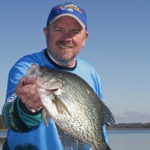
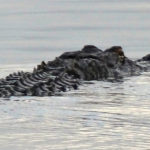
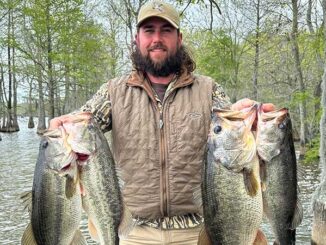
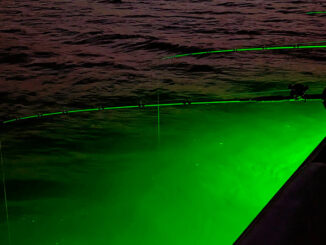


Be the first to comment